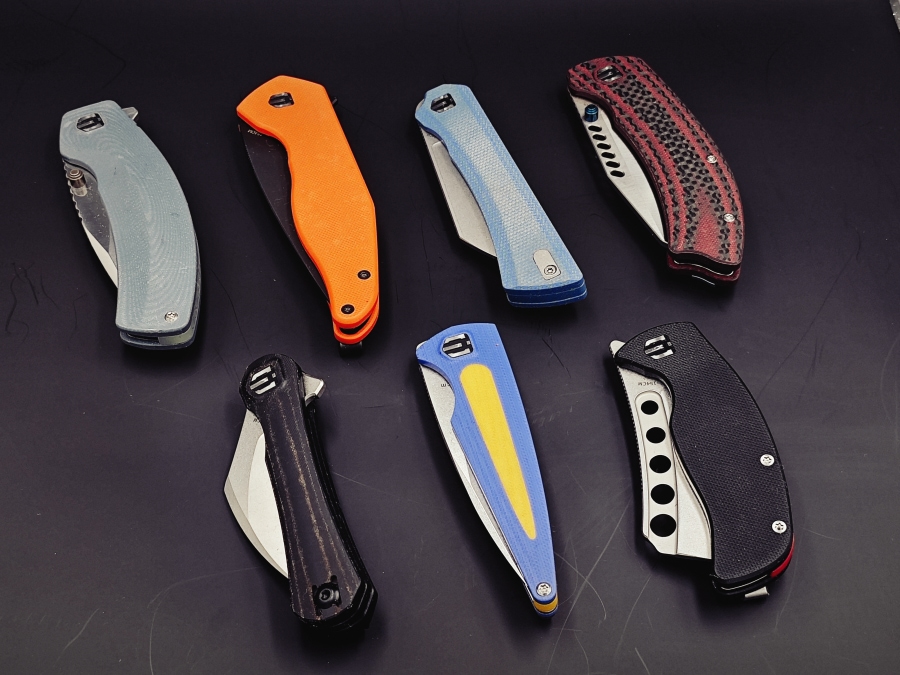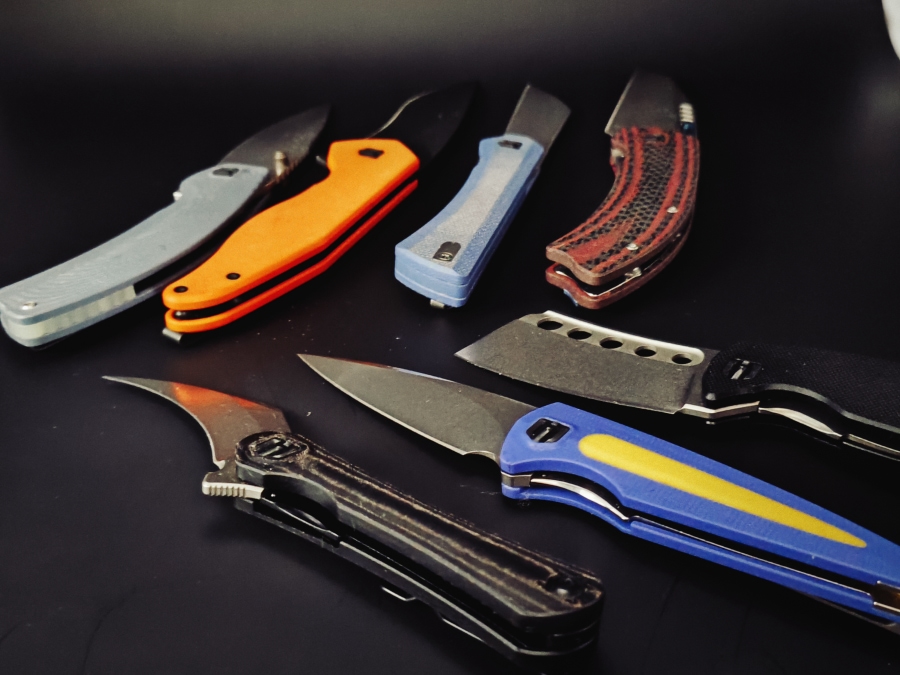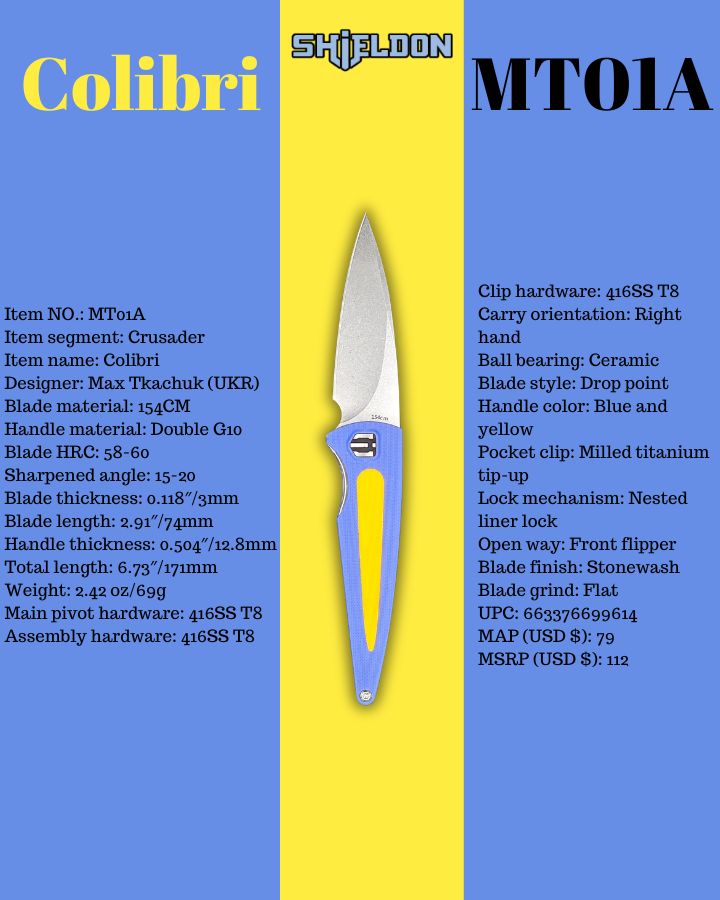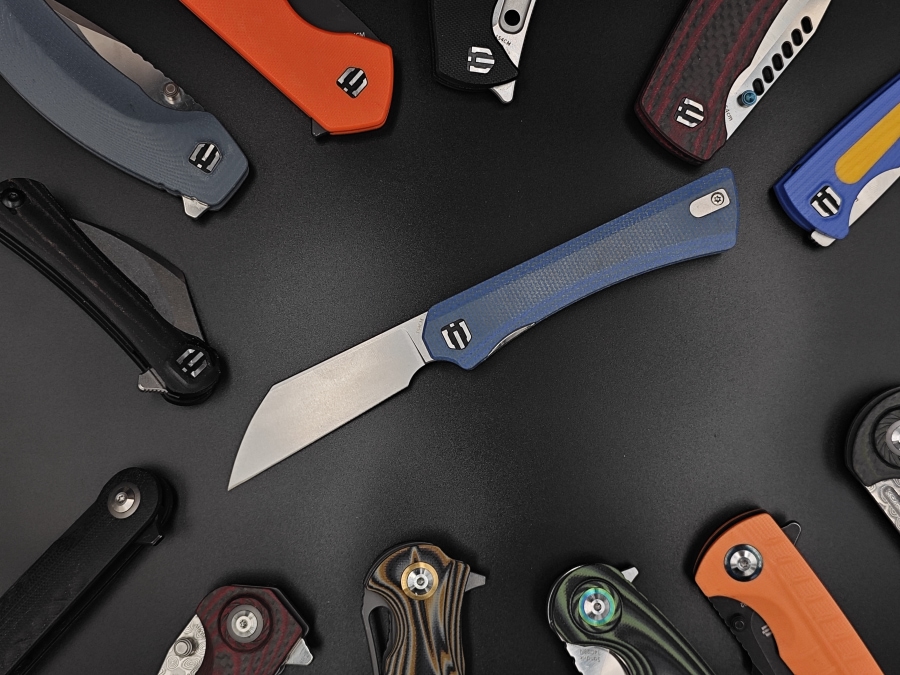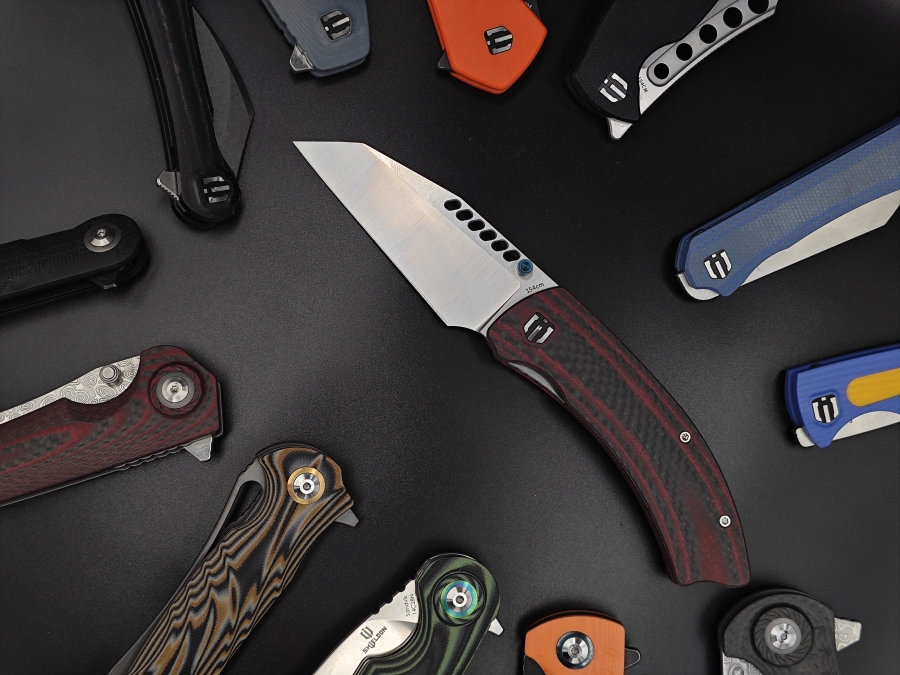Navajas de bolsillo are versatile tools that serve numerous purposes in everyday life, outdoor adventures, and in times of emergency.
Essentially, they are compact, foldable knives that can be easily carried in one’s pocket, making them an indispensable part of daily carry for many individuals.
The selection of a hard-use pocket knife requires a careful balance between affordability and quality, ensuring that the knife is both reliable and within financial reach.
This article reviews some of the best options for hard-use pocket knives available under two budget categories: under $50 and under $100.
Criteria for Selecting the Best Pocket Knives
Blade Steel Quality and Type
The steel type in a pocket knife blade is key to how well it performs and how long it lasts. For instance, high-carbon stainless steel is known for being durable, resistant to rust, and easy to sharpen.
A knife with a blade made from this material can withstand the rigors of hard use without frequent maintenance.
On the other hand, blades crafted from tool steel, though exceptionally tough and able to retain sharpness for extended periods, may require more care to prevent corrosion.
Selecting a pocket knife with the appropriate grade of steel for its intended application ensures a balance between upkeep and performance.
Lock Mechanism Security
A good lock is crucial for a pocket knife used heavily. It stops the blade from closing by accident when in use, keeping the user safe from getting hurt.
The most common lock types include:
- Bloqueo de revestimiento: This mechanism features a steel liner within the handle that moves into place behind the blade to lock it open.
- Bloqueo de marco: Similar to the liner lock, but part of the handle itself slides behind the blade.
- Bloquear atrás: A locking lever on the back of the handle clicks into a notch on the blade to keep it securely in place.
Each type offers a unique balance of security, ease of operation, and durability, making lock mechanism an important consideration based on personal preference and the knife’s intended use.
Handle Material and Ergonomics
The material from which a knife’s handle is made affects not only its durability but also its comfort and grip. Materials commonly used for hard-use pocket knife handles include:
- G-10: A lightweight, durable laminate made from fiberglass that offers great grip, even in wet conditions.
- Aluminio: Known for its strength, low weight, and corrosion resistance.
- Stainless Steel: Offers significant durability and resistance to environmental damage but can be heavier than other materials.
- Micarta: A composite material made of linen or paper layers in a resin, recognized for its strength and tactile grip.
Durability and Maintenance
A hard-use pocket knife needs to be tough enough to handle not just daily tasks but also tougher challenges without breaking. Its durability comes from the materials used and how well it’s made.
Maintenance includes how easy it is to clean, sharpen, and take care of the knife. Ideally, a knife that needs less maintenance but stays functional and reliable is better for tough situations.
Uso previsto
The primary purpose for which the knife will be used significantly influences the selection criteria:
- Transporte diario (EDC): An ideal choice might be a lighter, compact knife with a versatile blade that’s easy to use with one hand.
- Camping or Outdoors: A strong knife that has a solid lock, tough handle, and maybe even a serrated edge for slicing through rope.
- Caza: A knife with a specific blade shape for skinning or processing game, and possibly a gut hook.
The Best Pocket Knives Under $50
CRKT Pilar – Compact and Robust
The CRKT Pilar shines as both an everyday companion and a workhorse for tougher tasks. With a 2.40-inch blade crafted from 8Cr13MoV steel, it balances sharpness and durability beautifully.
The stainless steel handle and frame lock mechanism ensure stability and safety during use. It’s ideal for precision tasks in work environments or as a reliable EDC option.
Read more about the CRKT Pilar here.
Civivi Elementum – Sleek and Versatile
The Civivi Elementum, costing $45.25, highlights Civivi’s ability to produce top-quality knives at an excellent price. It has a 2.96-inch D2 steel blade and a G10 handle for durability and comfort.
Ideal for outdoor activities such as camping or fishing, it’s a dependable knife. Additionally, its liner lock mechanism ensures safety during extensive use.
Learn more about the Civivi Elementum and its features here.
Ontario RAT 2 – Efficient and Reliable
The Ontario RAT 2 is a highly efficient and reliable knife within its price range, featuring a 3.0″ AUS-8 steel blade with a hardness of approximately 59 HRC for precision and durability.
Its full flat ground blade enhances cutting performance, with easy deployment via thumb studs.
The textured thermo-plastic handle offers a premium grip at a lower cost, and ergonomic features ensure secure handling.
Built with full stainless steel liners and an open pillar construction for easy maintenance, the RAT 2’s smooth operation is thanks to bronze phosphor and nylon washers, making it a standout choice for affordability.
The Best Pocket Knives Under $100
Finding the right mix of high-quality craftsmanship and affordability, pocket knives around $100 offer a great balance for both enthusiasts and everyday users.
We’re showcasing standout models in this price range that provide better functionality, high-quality materials, and careful design, all within a sensible budget.
SHIELDON Colibri – Precision and Style
El SHIELDON Colibri stands out for its smart design and usefulness. It costs $59 and has a 2.91” blade made of 154CM steel, which is great for keeping a sharp edge and resisting rust.
The handle is made of fiberglass, making it durable and lightweight. It also has a titanium pocket clip, making it easy to carry and always accessible.
The Colibri is perfect for outdoor activities, combining reliability and style in a small package.
Kizer Official Exclusive – Begleiter Mini
El Kizer Begleiter Mini, priced at $63, showcases Kizer’s dedication to quality at an affordable price. It features a 2.87″ 4V steel blade known for its durability and ability to stay sharp, making it ideal for heavy-duty cutting tasks.
The knife comes with a green aluminum handle for a reliable grip in any situation and a deep carry pocket clip for easy and discreet carrying. Its sheepsfoot blade design and thumb stud opener make it a great choice for those looking for performance and convenience.
Pilar® III Frame Lock – Urban EDC Refined
El Pilar® III, priced at $58, is a minimalist yet highly functional everyday carry knife. It modernizes the classic sailor’s knife for city life, keeping its strong utility.
The blade is made of D2 steel, ensuring it stays sharp longer. It also features a smooth IKBS™ ball bearing pivot for easy opening.
The knife is durable, thanks to a G10 handle with a stainless steel back. Its frame lock mechanism and discreet pocket clip combine strength, convenience, and easy carrying.
Maintenance and Care for Pocket Knives
Importance of Proper Maintenance
Keeping your pocket knife in good shape is key to making it last and work well, just like how regular check-ups keep a car running smoothly.
Take care of it to avoid ending up with a dull blade, a knife that’s hard to use, or even rusty.
By looking after your knife regularly, you make sure it stays dependable, safe, and lasts longer, which means you get more for your money.
Cleaning Your Pocket Knife
The first step in keeping your knife in good condition is to clean it regularly. After using it, especially if it’s come into contact with moisture, dirt, or food, gently wash it with soap and warm water.
It’s important to dry it well to avoid rust. For instance, clean your knife right away after getting back from a camping trip to remove any residue or debris.
Sharpening Your Blade
A sharp knife is safer than a dull one. Dull knives need more force, upping the chance of accidents. Sharpen regularly using a stone, honing rod, or sharpener.
Keep the angle steady along the blade’s edge while sharpening. Sharpen monthly if you use your knife daily; less often if you use it less.
Proper Storage
When not in use, store your pocket knife in a dry place. For those with multiple knives, consider a storage box that keeps them secure and separated.
Moisture is the enemy of steel, so for long-term storage, a coat of oil can help prevent rust. Placing silica gel packets where you store your knives can also help absorb any excess moisture.
Utilizing After-Market Products
Invest in a good quality knife sharpener and consider a protective case if you carry your knife daily or in potentially damaging environments.
After-market products like lubricants can also enhance the operation of folding knives by keeping the mechanism smooth. For instance, a fisherman regularly using his knife near saltwater might invest in a marine-grade lubricant to protect against harsh conditions.
Legal Considerations and Carry Guidelines
Understanding Local Laws
Before you decide to carry a pocket knife every day, make sure to check your local knife laws.
Laws about knives vary a lot by place, including rules about how long the blade can be, whether it locks, and how it opens.
For example, in many U.S. states, it’s illegal to carry a knife with a blade longer than 4 inches.
In the UK, pocket knives can’t have locking blades and must have blades shorter than 3 inches. Knowing these rules can help you avoid legal trouble.
Carrying Pocket Knives Responsibly
It’s important to carry and use knives responsibly for safety and to follow the law. Always keep your knife hidden and use it only when needed and safely.
For example, a craftsman uses a pocket knife for work and keeps it in a tool bag or a sheath on their person, making sure it’s not visible to avoid causing alarm or being mistaken for a weapon.
Selecting a Legally Compliant Knife
Picking the right pocket knife means thinking about what you need and what’s legal. In California, outdoor lovers need to choose knives with blades shorter than 2 inches to follow the state’s strict rules.
But in Texas, the laws are more relaxed, and you can have larger blades. Always check the laws in your area and choose a knife that’s legal to avoid trouble.
Misconceptions around Knife Carry Laws
A common misconception is that the legality of carrying a pocket knife is uniform everywhere.
However, laws not only vary by state or country but can also differ within regions, cities, or towns.
For example, carrying a certain type of pocket knife may be perfectly legal in one city, yet crossing into another nearby city with the same knife could be illegal if local ordinances differ.
It’s essential to not only know the laws of your area but also of any places you plan to visit with your knife.
Conclusión
In conclusion, choosing the right hard-use pocket knife within your budget depends on understanding your needs and knife laws. Consider the Pilar® III for its tough D2 steel blade, ideal for urban adventures. Regular maintenance like cleaning and sharpening extends its life.
Also, it’s vital to know local knife laws to carry your knife responsibly. Whether it’s for daily use, outdoor activities, or professional needs, balance functionality, legality, and affordability.
A well-selected pocket knife provides satisfaction and reliability.
Focus on quality, practicality, and adherence to laws for the best experience.
Preguntas frecuentes
How can you ensure that a budget-friendly pocket knife under $50 still offers the durability and reliability needed for heavy-duty tasks?
To find a budget-friendly pocket knife under $50 for heavy-duty tasks, focus on a few key points.
First, choose knives with blades made from durable materials like stainless or carbon steel, ensuring they stay sharp and resist corrosion. Opt for handles made of tough materials such as G10 or reinforced nylon for a strong grip.
Ensure the knife has a sturdy build, with a reliable locking mechanism to prevent it from accidentally closing during use.
Checking customer reviews can help gauge the knife’s real-world performance. Lastly, reputable brands often provide good value in this price range, offering quality, durability, and reliability, making them suitable for demanding tasks.
How do the materials and build quality of sub-$100 pocket knives compare to their high-end counterparts, and what are the implications for performance?
Sub-$100 pocket knives often match the quality of more expensive ones, though with some trade-offs.
These knives might use less premium steel and simpler handle materials, impacting sharpness and durability. However, high-end knives have advanced alloys and treatments for better performance.
Yet, many affordable knives excel in daily tasks and moderate use, providing great functionality and value.
While they can satisfy most users, enthusiasts and professionals may notice differences in sharpness, weight, feel, and longevity compared to luxury models.
When considering a pocket knife around the $100 price point, what additional features or improvements can buyers expect compared to lower-budget options?
When looking at pocket knives around the $100 mark, buyers will find some upgrades compared to cheaper models.
This price range often features better blade steels with longer-lasting sharpness and less rust.
The handles are also likely to be made from higher-quality materials like aluminum, carbon fiber, or tough plastics, offering a stronger grip and more durability.
Moreover, you can expect better-locking mechanisms, like frame or liner locks, for safer and easier use. Plus, the design and looks usually get more attention, with nicer details and finishes.
How does the type of blade steel used in budget-friendly pocket knives impact their edge retention, sharpness, and overall longevity?
Budget pocket knives’ blade steel affects how long they stay sharp, their overall sharpness, and how long they last.
These knives often use cheaper steel types that don’t stay sharp as long as the more expensive ones, meaning they need sharpening more often.
However, they are usually easier to sharpen. While this kind of steel might wear out faster and be less resistant to corrosion, it can still handle everyday tasks well.
Picking a knife that balances good steel quality with cost can give you a durable and functional tool without breaking the bank.
For those who rely on their pocket knife for outdoor activities, such as camping or hiking, what are the best budget options that offer both durability and convenience?
For outdoor enthusiasts seeking a budget-friendly pocket knife that doesn’t compromise on durability and convenience, consider models like the Ontario RAT Model 1, Spyderco Tenacious, and the Gerber StrongArm.
These knives are praised for their sturdy build, reliable use in different conditions, and comfortable grip, making them great for camping, hiking, and outdoor adventures.
They strike a balance between quality and price, making them durable for outdoor activities yet

